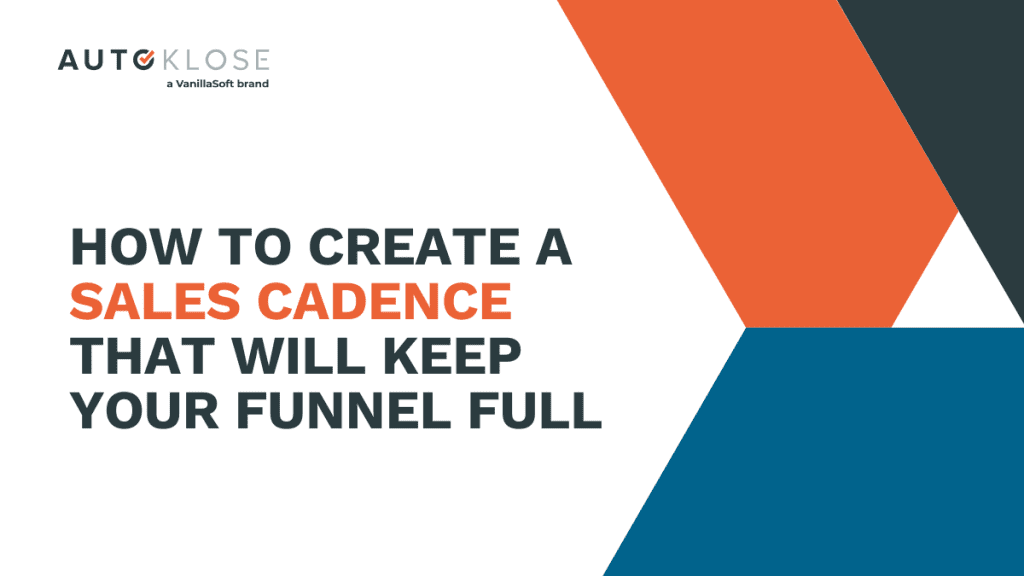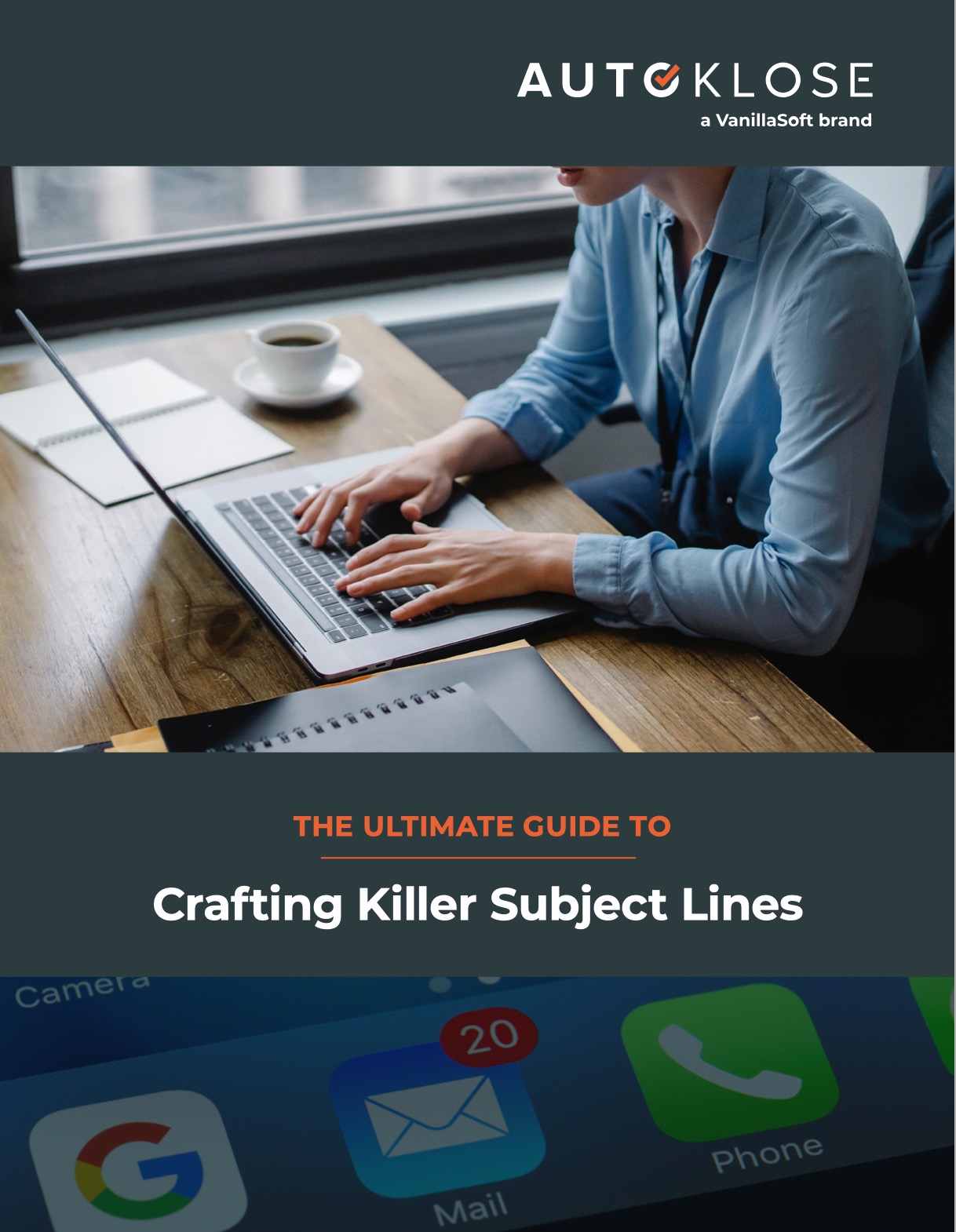
One of the most significant concerns for any proficient sales manager is ensuring their team doesn’t inadvertently annoy or bore prospects, leading to missed opportunities and failed deals. The challenge lies in balancing persistence with patience, especially when it takes considerable effort to convey all the benefits of your product or service effectively.
According to RAIN Group, it takes an average of 8 touches to get an initial meeting with a new prospect. Yet, most sales reps give up well before reaching that point. This highlights the need for a strategic approach to maintain engagement without overwhelming prospects.
A well-thought-out sales cadence is crucial in helping your team find the balance between being persistent and becoming a nuisance.
By implementing a structured plan, you can guide your sales reps in maintaining consistent, value-driven interactions that move prospects through the sales funnel effectively.
What Is a Sales Cadence?
A sales cadence, or a sales sequence, is a series of different sales activities and methods designed to establish contact with a prospect, engage them, and nurture them into becoming a customer.
An indispensable part of any sales cadence is a timeline, that is, the frequency of these activities. As we’ve already mentioned, there should be at least 8 touches with the same prospect over a predefined period.
The Importance of Sales Cadence
To better understand the importance of a sales cadence, consider these four crucial aspects:
- Your leads won’t slip through the cracks of your CRM.
- It allows you to create predictable revenue.
- Your sales team will have an established framework to follow.
- Your leads will move through the stages of the funnel, progressing toward closing deals.
- It enables better tracking and measurement of sales activities.
- It helps identify the most effective touchpoints and strategies.
- It ensures a consistent and systematic approach to sales outreach.
- It can increase efficiency by automating certain follow-up tasks.
- It improves the ability to personalize interactions with prospects.
This process can significantly improve the communication between your sales reps and your customers, and as we all know, sales is about reaching out to people, helping them, and building relationships.
Here’s what you should bear in mind when creating your sales cadence.
How to Build a Sales Cadence
1. Who’s Your Target Audience?
The first step in building your sales cadence is identifying who your target audience is and establishing your buyer personas – these could be VPs, C-level execs, different managers, and directors.
You can’t have the same sales sequence for every buyer persona.
For example, what works for C-level execs is a greater number of personalized emails with fewer phone calls.
On the other hand, when it comes to managers and supervisors, your sales sequence should consist of an equal number of emails, phone calls, and social media touchpoints.
2. The Channels of Communication
A good sales cadence includes various channels of communication with your prospects – emails, phone calls, voicemail, LinkedIn InMail, or direct social media messages.
This way, you’ll be able to identify what each of your prospects prefers and use the information to fine-tune your sales sequence and focus on that particular medium.
Industries with shorter sales cycles and smaller deal sizes would benefit from a more aggressive approach, such as making phone calls immediately.
But if your sales cycles are longer and deal sizes are larger, you should start gradually warming up your prospects through email and social media messages and then introduce a more aggressive medium like the phone.
Setting up a sales cadence can significantly speed things up and decrease your sales cycle.
3. Define Your Unique Selling Point
For your sales cadence to be successful, you need a unique selling point (USP). This is what differentiates your products or services from those of your competitors.
Ask yourself: What offerings do you have that will make your target audience opt for you and not somebody else who offers the same or similar solution?
Is it a competitive price?
Higher quality?
Additional features?
A better customer experience?
A new approach to solving a problem?
If you’re unsure which of these ideas works best for your target audience, analyze your existing customers. You can run a campaign and try to understand why your existing customers love your brand.
You can also ask them why they chose your product or service and what aspects of your solution appeal to them. For example, formulate possible answers in the following manner:
- The solution successfully solved a problem X
- The solution helped me improve productivity by X percent
- The solution increased the revenue by X
This will make it easier for you to distill your marketing message and USP so that your campaign provides value to your prospects. In other words, you need to have a good reason to reach out to them every time, and with a strong USP, they won’t mind multiple emails from you.
4. What’s the Ideal Duration and the Spacing Between the Activities
When we’re talking about the duration of your sales cycle, we’re referring to the length of your sales sequence from the very first touchpoint to the last one.
How long should a sales cadence last?
A sales cadence typically lasts between 2 to 4 weeks, though this can vary based on your industry and the complexity of the sales process.
If the prospect is not responsive, you can extend the cadence or switch to a longer-term nurture sequence. The goal is to stay persistent but not overwhelming, adjusting based on engagement and feedback.
In other words, you shouldn’t go for a shorter sequence because that way, you’ll fail to properly engage your prospects and get them to respond or make their first move.
What about the time gap between outreach attempts?
Spacing is the time gap between contact attempts, and it’s crucial for making your sales cadence effective yet not spammy.
The ideal time gap between outreach attempts in a sales cadence can vary depending on your sales process and the target audience. However, a common approach is to use a mix of short and long intervals to balance persistence and respect for the prospect’s time.
Here’s a general guideline:
- Initial Contact: Follow up within 1-2 business days after the first contact.
- Second Attempt: If there’s no response, try again in 3-4 business days.
- Subsequent Attempts: Space these out more as the cadence progresses—e.g., every 5-7 business days.
- Long-Term Follow-Up: After several attempts, consider reaching out every 2-4 weeks.
Remember to monitor and adjust based on the engagement rates and responses you receive. Some industries or prospects may require a more aggressive or more relaxed approach.
Is there a formula for structuring your sales cadence?
While there are different opinions on how to structure a successful sales cadence, Max Altschuler, CEO of Sales Hacker, suggests the following timeline:
- day 1 – email/InMail
- day 3 – an email in the morning, a phone call in the afternoon
- day 5 – a call in the morning, a call with a voicemail in the afternoon
- day 7 – an email in the morning, a call with a voicemail in the afternoon
- day 10 – an email in the morning, a call with a voicemail in the afternoon.
This is just one example, and you should A/B test your cadence to see what works and what doesn’t.
5. Craft the Right Content for Your Cadence
It stands to reason that you won’t send the same message every time you reach out to your prospects.
The success of your sales cadence heavily depends on how you craft and tailor your content to every segment of your audience, the channel of communication, as well as to every single attempt.
As for the very email copy, trying to blatantly make your prospect feel guilty for not responding to you is a big no-no.
You can use witty remarks and humor, but avoid crossing the line.
When it comes to the content that you can send your prospects, again, versatility is the way to go.
Think about what would resonate with every segment best, and don’t send something just for the sake of it.
Another big no-no is sending the same content all the time. And never send content packed with fluff, that is, articles or posts from which your prospects can’t find out or learn anything new.
Only helpful content they can put to good use to solve some of their issues will do.
Include different content formats, and create ebooks (check out our B2B-Sales Handbook and find a lot of firsthand advice and tips on different sales tactics), infographics, webinars, blog posts, videos, case studies, customer testimonials, or anything that you think your prospects might find useful.
As you can see, creating a sales sequence is a must if you want to have a viable sales process that can help you nurture, qualify, and convert leads.
The trick is to monitor the performance of your campaigns closely and tweak the content, frequency, and communication channels based on the analytics.
With Autoklose, you’ll always be in the know when it comes to your email engagement, as our granular analytics gives you a detailed insight into how your campaigns are performing in real time and allows you to polish and tweak them.
Conclusion
Having a well-structured sales cadence will result in getting your message across without annoying your prospects.
These tips can help you build a sales sequence that’s perfect from the technical point of view, but if you want it to really work, make sure you polish your messaging and make it resonate with your target audience.
 The Autoklose
The Autoklose 


[…] somewhere between 6 to 8 follow-ups over 35-40 days to reach a cold lead, so it’s crucial to plan your cadence in advance. When it comes to warmer leads, you can expect somewhere between 4-6 follow-ups in which you’ll […]